-
Posts
138 -
Joined
-
Last visited
Content Type
Profiles
Forums
Gallery
Events
Articles
Posts posted by almingbg
-
-
The information about different grading systems can be found in every Krause and Pick catalogue.
-
Also making to my first visit to the Edinburgh Coin Shop tomorrow as hoping to get some really good literature to help me define where i should take my collection.
That's one really smart move, getting the book before the coin.
Good luck with collecting
Almin
-
Exactly
-
Here's the lint to the translated document
-
Do you know what conditions existed that allowed stamping of some notes? Was it a tax thing or a valid "papers" thing or ?
I'm not sure that I understand your question. I'll try to describe the political and monetary situation in that region.
WW1 ended in December 1918, and one of results was the crash of the Austro-Hungarian empire and the creation of several new countries: Czech republic, Hungaria, Kingdom of Yugoslavia, (maybe, I'm not sure) Romania, Fiume (as a free city)... Austro-Hungarian money soon started to loose it's value, and those new countries decided to "mark" or "validate" A-U kroner found on their territories, to prevent circulation of fresh printed (and worthless) A-U kroner.
You can try to put this document into Google translate (Croatian->English), the result is actually quite good (one thing: Rijeka means river, but I don't think that there's any river in the city of Rijeka
 )
)best regards
Almin
-
Yes, that's right.
And to prohibit the use of the same but not overstamped banknotes from other countries.
-
Nice notes! We dont' get to see them too often. It's good to see the types of overstamps on them. Is there a reason that some of them have the second square overstamp along with the circular one? Or do the top notes have the square stamps on their reverse?
Congrats on getting these - cool notes to have.

Thanx dave
Yes, there is a reason for two overstamps.
Actually, there are three different overstamps - the third one is knows as Savoy or SABAUDO coat of arms, used by Italian army. Banknotes with this overstamp are extremely rare (unfortunately, not my collection):


Right after WW1 (september 1919) Italian troops, led by D'Annunzio, marched in Fiume and annexed the city to Italy. They accepted Austro-Hungarian monetary system and every banknote that circulated in the area was overstamped.
The first type of stamp was SABAUDO stamp. Together with it, the second type was introduced - the oval stamp CITTA DI FIUME. This one was in use for only a couple of weeks, because of heavy counterfeits. In the beginning oh November 1919. the third stamp was introduced - rectangular stamp INSTITUTO DI CREDITO - CONSIGLIO NAZIONALE - CITTA DI FIUME. Only the higher value banknotes (10-1000 kroner) with type II stamp were overstamped with the third stamp.
Papirni novac - Fiume - D'Annunzio (Paper money - Fiume - D'Annunzio) page shows all overstamped banknotes with values in € for fine, VF and XF.
-
Interesting. Did they have their own note issues, or only temp / emergency issue overstamped Austrian notes?
Hi ccg
There are some other banknotes, from mid 1800 and post WW1, but they are some kind of emergency issues too. More details can be found in a catalogue by Borna Barac: Paper money from the states of the former Yugoslavia
More info about city of Fiume / Rijeka can be found on wikipedia: Free State of Fiume, and even some info about Fiume krone (very basic and incomplete).
There are some other resources about Fiume kroner, but they are in Croatian:
Papirni novac - Fiume - D'Annunzio (Paper money - Fiume - D'Annunzio)
best regards
Almin
-
Hi everyone
Here come several banknotes from the city of Fiume, today Rijeka, Croatia. Banknotes are rather scarce, you don't see them every day.
Fiume PS101a 1 krona 1916 - circular stamp Citta di Fiume
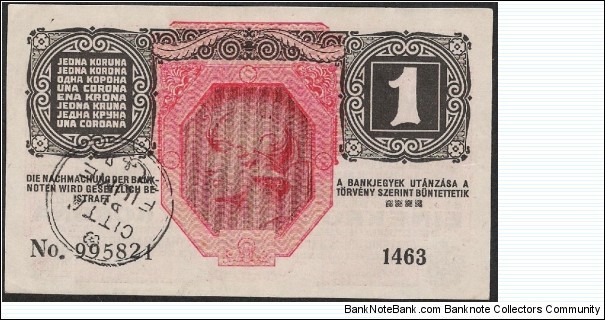
similar banknote:
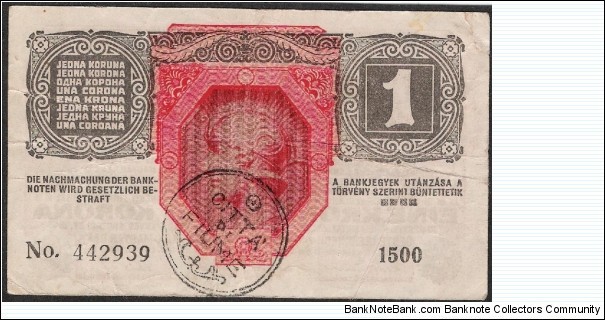
Next one is Fiume PS108c 10 kronen 1915 (1921) - circular stam Citta di Fiume on the obverse, and rectangular stamp Instituto di Credito Consiglio Nazionale on the reverse
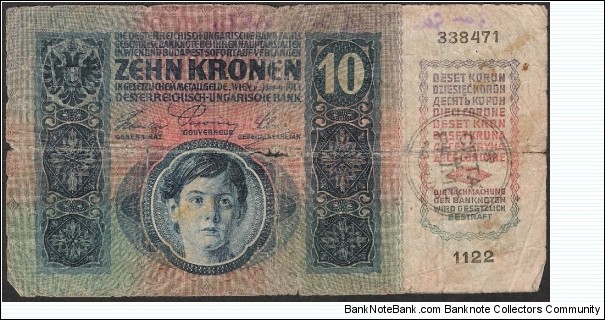
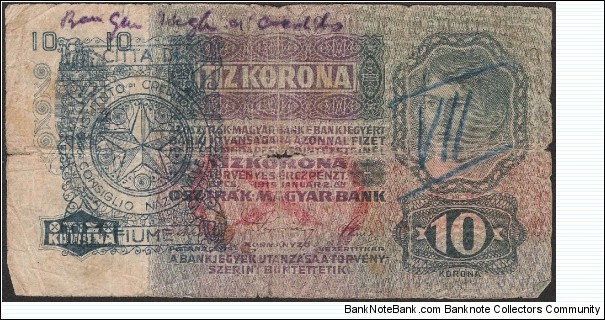
And the last one is Fiume PS112d 50 kronen 1914 (1921), with both stamps on the obverse:
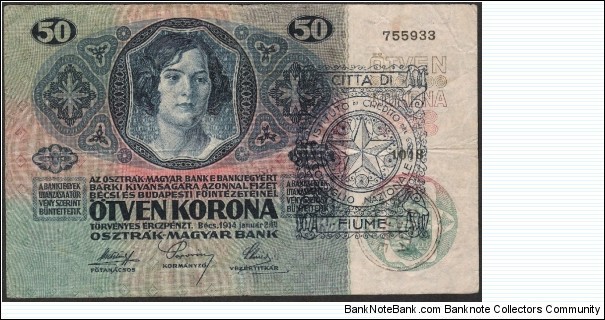
bye
-
Great notes
-
Nice. Very nice.
-
wonderful
-
I'm so jealous on that note from Morocco
-
Got this one 2 days ago:
Yugoslavia P67a 1,000 Dinara 1946 - ornament paper, without security thread (AU)


(scans are from Ron Wise's gallery, haven't had time to scan my banknote)
-
This one came last week
Yugoslavia 25 para = 1/4 dinara 21.3.1921 (UNC)


(scans are from Ron Wise's gallery, haven't had time to scan my banknotes)
-
-
Beautiful note, indeed
I'm drooling

-
There are some pretty nice babes on the painting.

-
Nice DDR notes indeed
-
all you need is art
-
Damnit, you beat me to it!

He beat me too
-
... The lion on the left looks as if he's had a rough night of it and has just woke up and is staggering about with a hangover. The unicorn on the right looks at first to be from a modern 'My Pretty Pony' toy line, with the overdone eyelashes...
A lion with a hangover and a unicorn with eyelashes



Post of the week, absolutely!!
BTW, beautiful note.
-
Scanning the watermark is not easy; sometime it's easier to photograph the watermark.
Try holding your banknote against the light source (bright lamp or even a computer screen with white background) and make a photo with a digital camera.
-
Can you post better picture of the watermark area?



Latest Banknote purchases.
in Banknote Forum
Posted
Searching is very important part of collecting. Nothing beats the feeling when you finally find something that you've been searching for years.